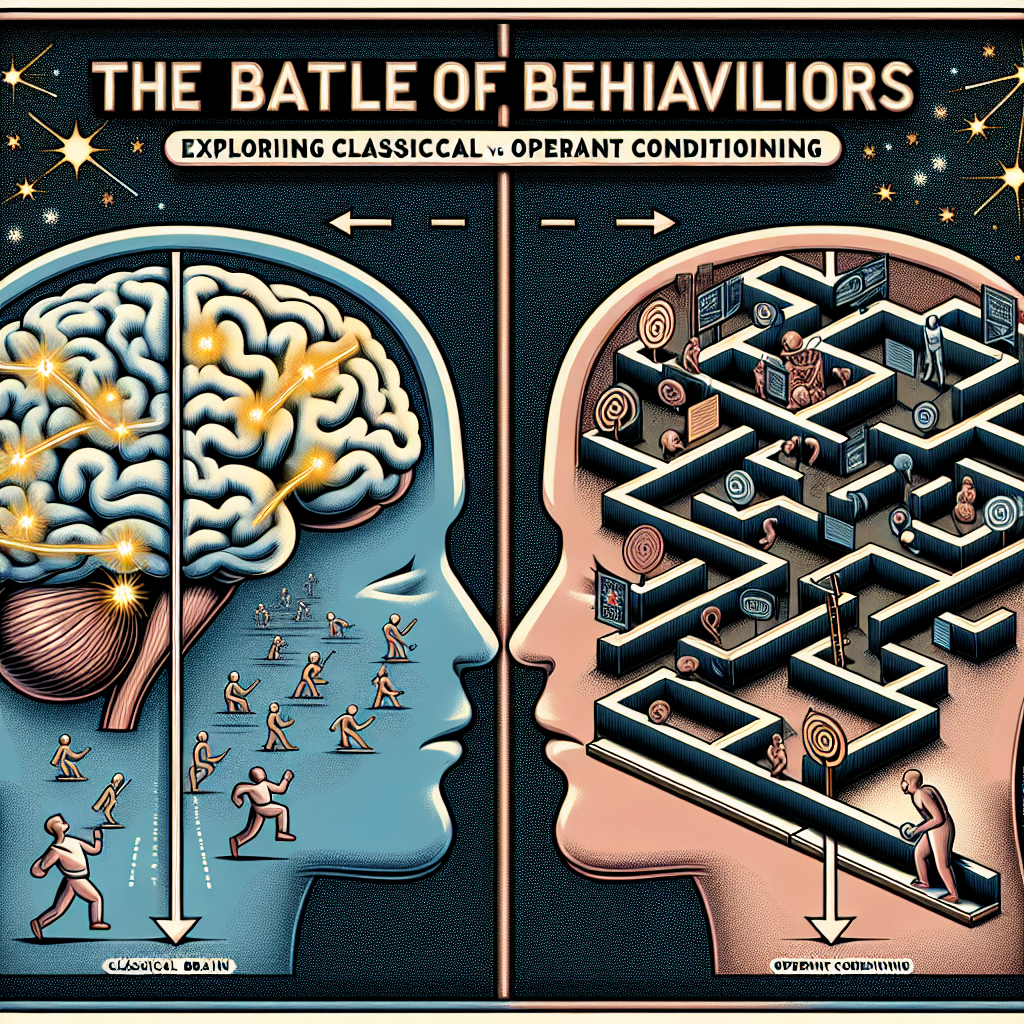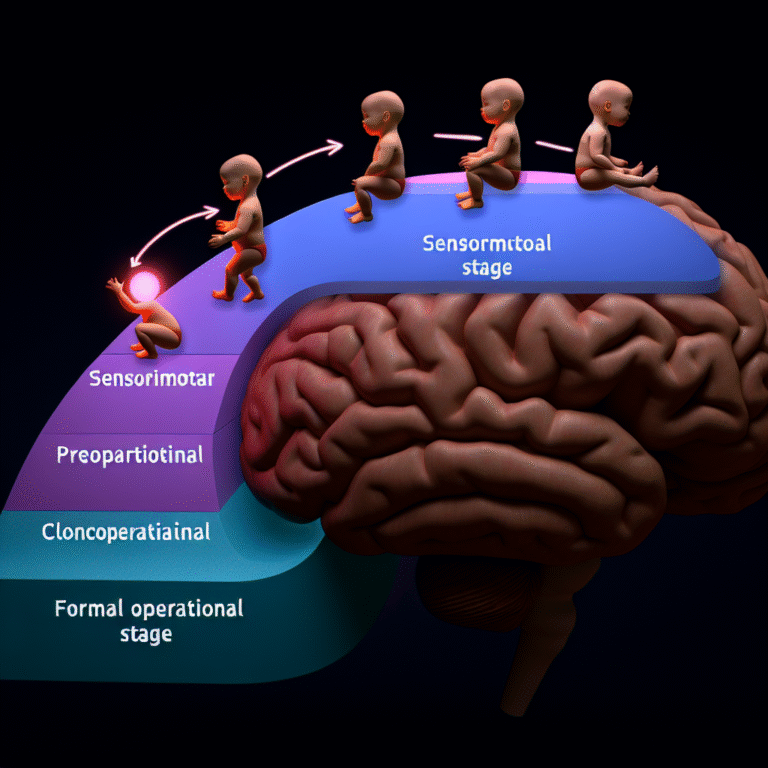
The Ultimate Battle of Behaviors: Exploring Classical and Operant Conditioning
Introduction
In the realm of psychology, behavior shapes our daily lives, influencing how we learn, interact, and adapt to diverse environments. Among the most significant frameworks in understanding behavior are classical and operant conditioning. These two foundational theories have not only transformed psychology but also permeate various aspects of our lives—from education and parenting to animal training and therapy. In this detailed exploration, "The Battle of Behaviors: Exploring Classical and Operant Conditioning" reveals the nuances of these conditioning types, illustrating their profound impact through fascinating case studies and real-world applications.
Understanding the Foundations of Conditioning
Before diving deeper, it’s essential to establish what classical and operant conditioning entail.
Classical Conditioning: The Power of Association
Classical conditioning, first articulated by Ivan Pavlov through his famous experiments with dogs, revolves around the association between stimuli. In simple terms, it involves pairing a neutral stimulus with a significant one to elicit a conditioned response. For instance, Pavlov’s dogs learned to associate the sound of a bell with food, eventually salivating at the mere sound—demonstrating how behaviors can be conditioned through association.
Key Concepts:
- Unconditioned Stimulus (US): Natural stimulus that produces a response.
- Unconditioned Response (UR): Automatic reaction to an unconditioned stimulus.
- Conditioned Stimulus (CS): Previously neutral stimulus that, after association, triggers a conditioned response.
- Conditioned Response (CR): The learned reaction to the conditioned stimulus.
Case Study: Little Albert
In 1920, psychologist John B. Watson and his assistant Rosalie Rayner conducted an experiment with a young boy named Little Albert. They successfully conditioned Albert to fear a white rat by pairing it with a loud, frightening noise. This case study highlights how classical conditioning can instill fear and phobias, further emphasizing its powerful implications in understanding human behavior.
Operant Conditioning: The Influence of Consequences
Conversely, operant conditioning, largely attributed to B.F. Skinner, emphasizes the role of consequences in shaping behavior. This approach focuses on how reinforcement and punishment affect future behavior. In this framework, actions followed by favorable outcomes are likely to be repeated, while those followed by unfavorable ones tend to be avoided.
Key Concepts:
- Reinforcement: Anything that increases the likelihood of a behavior being repeated.
- Positive Reinforcement: Adding something pleasant to encourage behavior (e.g., rewards).
- Negative Reinforcement: Removing an unpleasant stimulus to encourage behavior (e.g., pain relief).
- Punishment: Anything that decreases the likelihood of a behavior being repeated.
- Positive Punishment: Adding an unfavorable outcome to discourage behavior (e.g., scolding).
- Negative Punishment: Removing a favorable outcome to discourage behavior (e.g., losing privileges).
Case Study: Skinner Box
B.F. Skinner’s experiments in the "Skinner Box," where rats pressed levers to receive food pellets, exemplified operant conditioning. The little creatures learned to press the lever more frequently when they correlated it with rewarding outcomes, showcasing the vital aspect of reinforcement in behavioral change.
Comparative Analysis: Classical vs. Operant Conditioning
Behavioral Mechanisms
While both classical and operant conditioning significantly contribute to behavior modification, their mechanisms differ fundamentally.
| Characteristic | Classical Conditioning | Operant Conditioning |
|---|---|---|
| Nature of Behavior | Involuntary | Voluntary |
| Learning Type | Associative | Consequential |
| Response Timing | Stimulus before response | Response followed by consequences |
| Key Figures | Ivan Pavlov | B.F. Skinner |
Application in Real Life
Understanding how these two approaches can coexist enriches our perspective on behavior modification techniques.
Example: Fear-Based Learning
Schools often employ classical conditioning techniques to eliminate fear—for example, gradually exposing students to speaking in front of their peers, pairing the activity (initially scary) with positive reinforcement (praise).
Example: Behavioral Therapy
Conversely, operant conditioning forms the backbone of many behavioral therapies, where therapists utilize reinforcement strategies to encourage social interactions in clients with social anxiety.
The Role of Conditioning in Everyday Life
Parenting and Education
Both classical and operant conditioning strategies are widely implemented in educational and parenting methods.
Praise and Rewards: In classrooms, teachers might use positive reinforcement to encourage participation and good behavior. A reward system motivates students to engage actively.
- Routine Formation: Parents often create associations with daily routines (classical conditioning), such as bedtime rituals involving storytime that evoke feelings of safety and comfort.
Animal Training
Animal training is another area where "The Battle of Behaviors: Exploring Classical and Operant Conditioning" comes into play, providing trainers with pivotal tools.
- Clicker Training: This method employs operant conditioning—clicking the device at the moment the desired behavior occurs and following it with a reward reinforces that behavior.
Therapeutic Applications
In therapy, both conditioning principles hold vital roles.
Aversion Therapy: Classical conditioning helps clients associate negative stimuli with unwanted behaviors—like associating foul odors with smoking to discourage it.
- Token Economies: Used in behavioral therapy settings for individuals with behavioral disorders, operant conditioning principles are applied, where tokens are exchanged for privileges or treats, reinforcing desired behaviors.
Embracing the Battle: Strategies for Effective Behavior Change
To leverage both classical and operant conditioning effectively:
Tip 1: Combine Techniques for Maximum Impact
Utilizing both forms of conditioning can create a more robust method for behavior change. For instance, pairing positive reinforcements (operant) with positive experiences (classical) can maximize resorting to positive behaviors.
Tip 2: Be Consistent with Reinforcements
Needless to say, consistency is crucial. Just as Pavlov was consistent in ringing the bell every time dogs received food, consistency in applying reinforcements and punishments yields better behavior modification.
Tip 3: Adapt Strategies for Individual Needs
Recognize the unique traits of individuals. For example, while one child may respond positively to verbal praise (operant), another might thrive on confidence-building through classical conditioning techniques.
Conclusion
The intricate interplay between classical and operant conditioning illustrates the diverse ways we can influence and understand behaviors. From the training of animals to the shaping of our learning environments, understanding "The Battle of Behaviors: Exploring Classical and Operant Conditioning" arms us with strategies that can enrich our interactions and foster growth.
While we may often think of these strategies as tools of rigidity in behavioral change, their applications are genuinely flexible and adaptable. By being aware of these conditioning frameworks, we can empower not only ourselves but also those around us to engage in positive behaviors, ultimately changing our environments for the better.
FAQs
1. What are the main differences between classical and operant conditioning?
Classical conditioning relates to involuntary responses triggered by associations, while operant conditioning involves voluntary actions influenced by consequences.
2. How can parents use conditioning techniques effectively?
Parents can apply positive reinforcement by rewarding good behavior and establish classical conditioning through consistent rituals, enhancing security and predictability.
3. Is one type of conditioning superior to the other?
Both types serve different purposes; classical conditioning is often about creating associations, whereas operant conditioning focuses on the consequences that follow choices. They can be complementary.
4. Can conditioning methods backfire?
Yes, poorly applied techniques can lead to the reinforcement of negative behaviors; thus, it’s essential to employ consistent and careful strategies.
5. Are there ethical considerations in using these techniques?
Absolutely. It’s vital to ensure humane treatment, respecting boundaries and never inflicting unnecessary distress, especially when implementing conditioning techniques in therapy or education.
In continually exploring "The Battle of Behaviors: Exploring Classical and Operant Conditioning," we can apply insights and knowledge to nurture positive behaviors across various settings, enhancing our understanding of human nature and behavior patterns.













